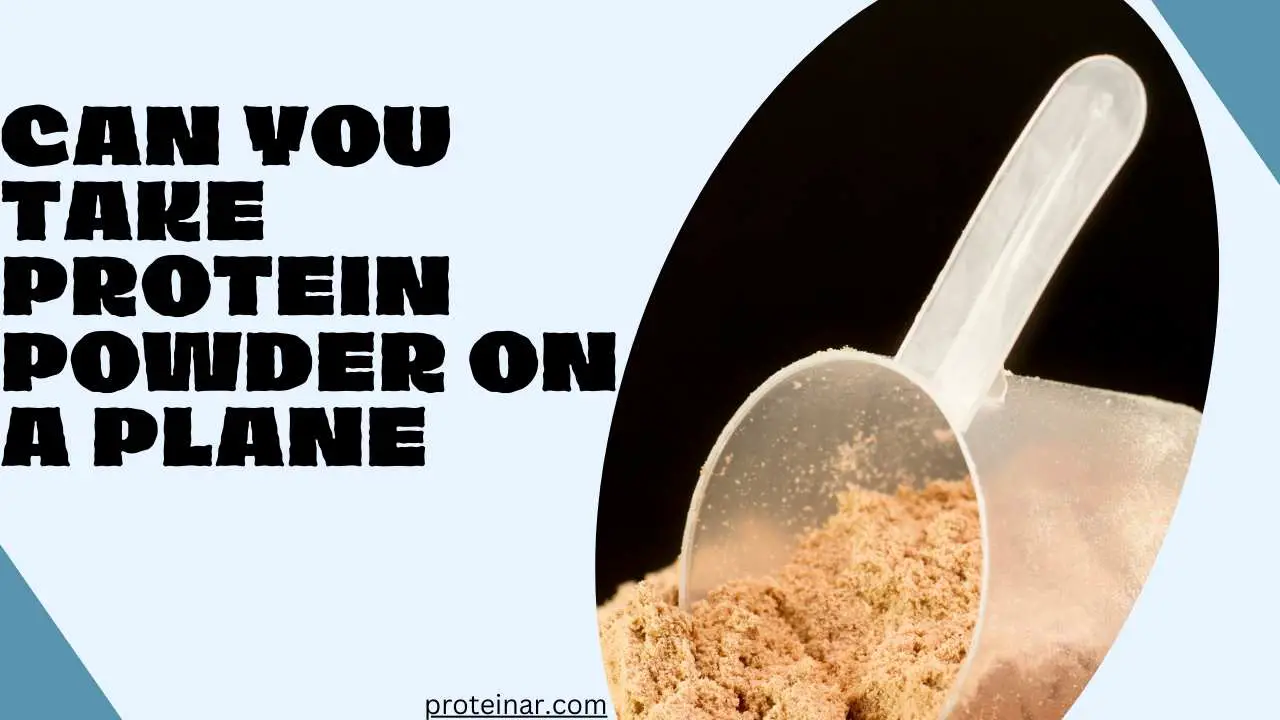How Much Protein Is In A Pound of Ground Beef: Unleash the Protein Power!

Discover the protein content in a pound of ground beef with our informative website. Learn about the nutritional value of this popular meat choice.
Introduction to How Much Protein Is In A Pound of Ground Beef
Protein is an essential macronutrient that plays a vital role in our overall health and well-being. Proteins make, keep, and change cells. They also make hormones and enzymes. They boost the immune system. You should eat enough protein. It helps prevent muscle loss. It makes you feel full after meals and supports healthy growth.
Understanding Protein Content in Food
When it comes to protein intake, not all foods are created equal. Foods have different protein contents. So, knowing what sources have much of this nutrient is crucial. Animal-based products such as meat or dairy are complete proteins because they contain all the essential amino acids.
The Nutritional Value of Ground Beef
Ground beef is a popular food worldwide because it offers a high amount of protein. It is made by grinding up cuts of beef into small pieces, thus making them more versatile as cooking ingredients. Ground beef has other essential nutrients for good health, like iron, zinc, and vitamin B12. It is also rich in proteins.
How Much Protein is in a Pound of Ground Beef
Now, let’s go directly into the main question at hand, which asks how much protein you can get from one pound of ground beef. The average pound of ground beef has approximately 64 grams of protein. However, this can vary slightly with the amount of fat in the meat. Leaner varieties usually contain a bit more per pound than others. But, this figure is just typical. The exact value depends on your choice of minced meat.
Comparing Protein Content in Different Cuts of Ground Beef
Not all ground beefs have similar protein amounts. Some have more than others, depending on their fat percentage. Lean varieties, such as those made from round or sirloin cuts, generally have more protein and less fat. They have higher ratios of protein to fat than types with more fat, such as chuck or beef with other fatty percentages. If you want to maximize your protein intake, consider using lower-fat ground beef products.
Protein Absorption and Utilization from Ground Beef
Protein is metabolized by a series of digestive processes so that it can be used by the body. This includes:
Digestion
Chewing starts in the mouth. It breaks food into smaller bits. This makes the food easier for enzymes to digest.
Once swallowed, the meat goes to the stomach. There, strong acid breaks down proteins into peptides—short amino acid chains.
The small intestine receives partially digested mixtures. It is the main site for protein absorption. Pancreatic and intestinal enzymes split peptides into amino acids.
Absorption is the process of soaking up. The walls lining these structures have tiny finger-like projections called villi that soak up loose amino acids.
Utilization
Liver: Once absorbed in the blood, they move into the liver to be handled and distributed for use in the body.
Protein Synthesis: The body can use these amino acids for many purposes. For example, to make tissues, muscles, enzymes, and hormones. In case of need, some amino acids might get converted into energy.
Factors Influencing Absorption And Utilization
Protein Quality: Ground beef is considered a high-quality source of protein because it has all nine essential amino acids that human bodies cannot produce, which have become a necessity to receive through food. This indicates efficient utilization of protein.
Cooking Method: When cooking, boiling or stewing would reduce nutrient content in proteins while baking or grilling maintains their level.
A Balanced Diet: To ensure proper digestion and nutrient absorption, your nourishment should include ground beef alongside other sources of protein plus fruits and vegetables with whole grains.
Adding Ground Beef to High Protein Diet
Ground beef forms an essential part of high-protein diets. How you can add this meat to your diet without compromising on the amount of protein is outlined below:
Leanness is everything else
Prioritize Protein: To maximize its content while minimizing fat levels, always choose lean ground beef (at least 90% lean).
Cooking Strategies
Maximize Protein, Minimize Fat Loss: For better retention of natural moisture and protein when preparing ground beef try using methods like broiling, grilling pan frying or baking whereas boiling or stewing result into loss of nutrients from it.
Don’t Overcook: Dried-out ground meat could be a sign that there is too much heat, causing even loss of proteins. Cook till done well inside at 160°F (71°C) which also guarantees safe consumption and better texture.
Ingredient Synergy
Protein Boosters: If you add chopped mushrooms, lentils, or finely minced tofu to your burger mixture, you could increase the number of grams per serving without affecting taste or mouthfeel significantly.
Flavorful Protein Sauces: Use marinades or low sodium broth, low fat yogurt, salsa for flavor and moisture instead of calorie laden sauces.
Recipe Inspiration
Ground Beef Classics with a Protein Twist: Take your favorite ground beef recipes and give them a protein boost. Think about preparing a lighter version using low-fat ricotta cheese and marinara sauce instead of the classic lasagna made with heavy béchamel sauce full of cheese.
High-Protein Ground Beef Bowls: These are quick, customizable, and protein-packed. To make one, put some brown rice or quinoa on your plate then place well-seasoned ground beef on top followed by oven roasted broccoli or bell peppers atop which you may spoon some Greek yogurt/salsa if desired.
Beyond the Basics
Meal Prep Magic: A large amount of lean ground beef can be cooked over the weekend then divide it into portions that can be used in several high-protein meals for the entire week. This will save time as well as ensure availability of high-protein options.
Leftover Love: Leftovers of cooked beef offers numerous opportunities to increase protein intake. For instance, they could be added to omelets or stir fries including stuffed peppers during lunchtime or dinnertime which have lots of proteins.
Cooking Tips for Maximizing Protein Content in Ground Beef
Here are some cooking tips to help you maximize the protein content in ground beef while preparing delicious meals:
Choosing The Proper Grind
Lean Ground Beef: Going for lean ground beef (at least 90% lean) lets you get more protein per serving while reducing fat content at the same time.
Pre-Cooking Strategies
Pan or Pot Heating Prior to Browning: Start by heating your pan or pot over medium-high heat. Put the ground beef in the hot oil and break it up with a spoon or spatula as it cooks. Overcrowding the pan will prevent proper browning and can also cause the meat to release its juices, which may boil rather than sear. Browning seals in protein and flavor.
Eliminating Excess Fat: Once you have browned your ground beef, empty off any extra fat that has accumulated on top of it. This is just extra fat that doesn’t add protein content but adds unwanted calories.
Methods of Cooking
Dry Heat Methods: Boiling or stewing should be avoided since grilling, baking, broiling, frying are all better options. Dry heat methods help keep moisture in meat thus minimizing the loss of proteins.
Don’t Overcook It: Overcooked ground beef turns out hard and dry, and excessive exposure to high temperatures might reduce its protein content negatively. For safety as well as improved texture cook till an internal temperature of 160°F (71°C) using a meat thermometer is achieved.
Addition of Ingredients
Protein-rich fillers: Think about adding ingredients that increase protein content without contributing to taste while reducing fillers. Ground mushroom pieces, lentils, or minced tofu mixed with ground beef would increase the total amount of protein per serving with minor alterations to the taste/texture of your dish.
Protein-Based Sauces: Instead of sauces made from heavy cream or butter, there are others, such as marinades made with low-sodium broth, low-fat yogurt, salsa, etc., keeping their taste whilst putting some more fluid into them instead of lowering their protein value.
Tips for Improvement
Marinades: Marinade will not only increase tenderness but also make your cooked steak tastier and help you minimize on cooking time hence fewer losses in terms of proteins.
Leftovers: Leftover cooked ground beef will stay good in the fridge for 3-4 days if you place it in an airtight container. This could be used in different recipes throughout the week, making sure that one maximizes their protein intake.
Other Health Benefits of Consuming Ground Beef
Lean Ground Beef and Its Additional Health Benefits
Ground beef, particularly lean ground beef (at least 90% lean), offers a variety of health benefits beyond its well-known protein content. Here’s a closer look at some additional advantages of incorporating lean ground beef into your diet:
Source of Iron
Energy and Oxygen Delivery: Ground beef contains heme iron, which is readily absorbed by the body. It is involved in the production of red blood cells that transport oxygen around your body. They help prevent fatigue and provide energy generally when there is sufficient iron intake.
A Rich Source of Zinc
Immunity Functions and Wound Healing: Zinc found abundantly in ground beef plays significant roles on immunity system by helping to fight off infections as well as cells growth during wound healing processes.
Vitamin B12 Provider
Production of Energy and Proper Nervous System Functioning: Finally, even though only trace amounts are contained but it remains an excellent source for vitamin B12 needed for energy production as well as normal functioning of neural system; a deficit may result in tiredness, muscular weakness and even neurology issues.
A Creatine Supply
Muscle Work Out and Regeneration: Short bursts of exercise rely on creatine found in muscle cells for instant power supply hence consuming meat products like ground beef would increase physical performance during workouts while also enhancing quick recovery.
Ground beef, which contains CLA in small amounts, has been suggested to have potential health benefits such as reduced body fat and better insulin sensitivity, according to some studies. However, further research is currently being conducted so as to ascertain the validity of these assertions.
Important Considerations
Balance is Key: Although ground beef has these advantages, it should be eaten moderately and accompanied by a balanced diet rich in fruits, vegetables, and whole grains.
Fat Content: Choose lean ground beef (at least 90% lean) for low saturated fat content and high protein concentration.
Cooking Methods: Cooking methods like grilling, baking, or pan-frying can reduce fats while still retaining nutrients.
FAQs
Can ground beef be part of a healthy diet?
Yes, it can be when consumed in moderation and as part of a balanced meal plan. Selecting the leanest cuts of meat and cooking them properly can help minimize fat intake.
How does ground beef compare to other protein sources?
Ground beef is not the only source of protein available. Fishes, chickens’ meats, curdles soybeans and beans are also great sources of proteins that make up a good diet.
Can ground beef help with weight loss?
It can be included on a weight loss program but portion control and choosing leaner cuts are important. The consumption should always be accompanied with balancing energy intake with energy expenditure for an effective weight cut regime.
Conclusion of How Much Protein Is In A Pound of Ground Beef
Many health benefits come from ground beef since it is a highly nutritious product containing lots of proteins. Because of its abundant nutritional value, which consists mostly of proteins, this food may become an important part of our daily rations. However, by knowing the How Much Protein Is In A Pound of Ground Beef levels in ground beef, variations on different pieces, and mixes into meals, we uncover its protein power while taking pleasure with its taste buds for one’s life.
Remember that you need to buy thinner meat slices so that you can cook it well and maintain its nutritional value. Then, when planning your next meal, ensure that you have added beef to the menu and get all the required proteins in the most delicious way.





